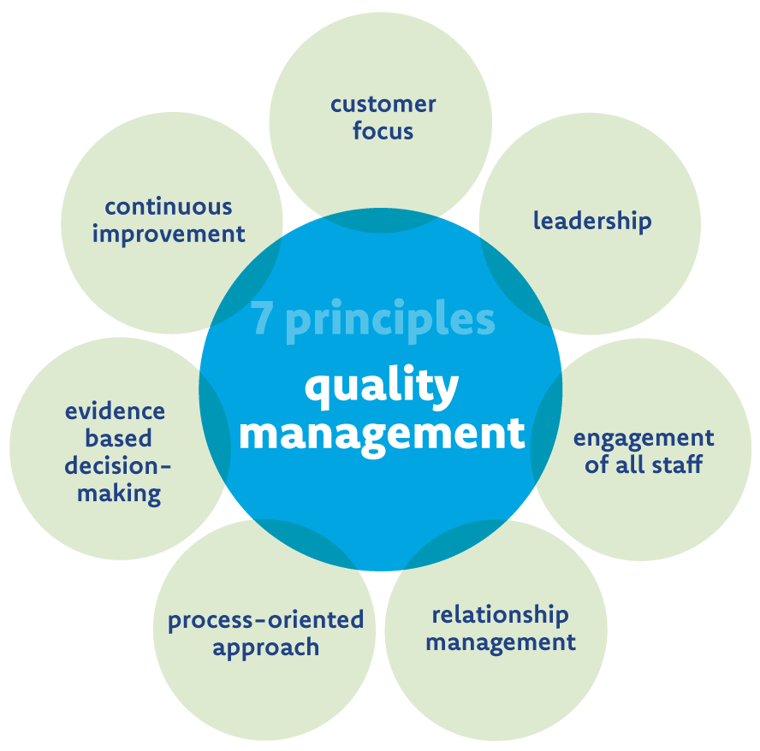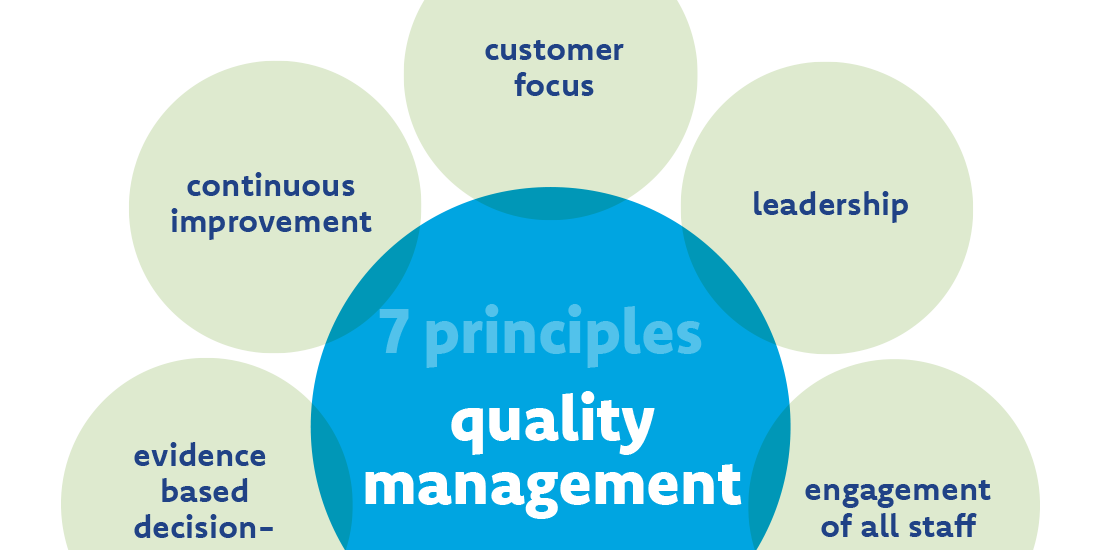ISO 9001: the 7 quality principles as the basis for any quality management system
With more than 1 million organizations certified for ISO 9001, it is the world's most popular quality standard.
So for many organizations, ISO 9001 is well known and has long been part of the standards within the company. But have you ever wondered why the requirements in ISO 9001 are the way they are?
This blog is intended for those who are still unfamiliar with the ISO 9001 standard and are considering implementing it, as well as for the more seasoned quality professionals who need a quick refresher.
In this blog, we will discuss the 7 quality principles on which ISO 9001 is based. This will give you an understanding of why the requirements are the way they are. This will help you establish a more effective quality management system!
But before we do, for those readers who are new to this concept, let's briefly answer the question: what is ISO 9001?
ISO 9001, what exactly is it?
ISO 9000 is a family of standards for quality management. The standards in the ISO 9000 family are internationally recognized and provide guidelines and tools for companies that want to ensure that their products and services meet the needs of their customers and other relevant stakeholders.
Within the ISO 9000 family, ISO 9001 is the specific standard that focuses on quality management systems. The 2015 revision of this standard is the most recent version.
ISO standards are issued by the International Organization for Standardization (ISO), a network of national standards bodies in more than 160 countries. A standard can only be issued if the majority of the institutes agree.
The purpose of ISO standards is to promote (international) trade by establishing common guidelines that can be used by companies around the world.
This makes it easier to buy and sell products and services, as you can be confident that these products and services meet certain minimum quality criteria.
The difference between ISO 9001:2015 and 9001:2008
Meanwhile, ISO 9001:2015 has been the standard for years, so we won't go too deeply into the differences from the older version. But should you be new to the ISO world, it may be helpful to know a little about the changes. Three changes we'd like to discuss:
- One of the most important changes in ISO 9001:2015 is the introduction of "risk-based" thinking. This means that when setting up your quality management system, you must consider the risks and opportunities that may affect your ability to meet customer requirements.
- Changes have also been introduced to the structure of the standard, designed to facilitate its use in conjunction with other ISO standards (such as ISO 14001 for environmental management and ISO 45001 for health and safety). This is also known as the High Level Structure (HSL). Meanwhile, work is also underway on a limited revision of the HLS: the Harmonized Structure (HS).
- And finally, the emphasis has shifted from "preventing deviations" to "improving customer satisfaction." This means that your quality management system should be focused on meeting customer needs and expectations, rather than focusing on preventing defects.
Why is ISO 9001 important?
As we described earlier, the purpose of ISO standards is to promote (international) trade by providing customers with a degree of assurance that the products or services they purchase meet certain minimum quality criteria.
ISO 9001 is an important part of this. If you as a company are ISO 9001 certified, it means that your quality management system meets the requirements based on the 7 quality principles of the ISO 9001.
What are the 7 quality principles of ISO 9001?
The requirements in the ISO 9001 standard are based on seven quality principles. There is no specific order to these principles because they are all considered equally important.

1. Customer focus
This principle involves constantly thinking about your customers and their needs. Customer-centric doesn't just mean making sure you meet their needs - it's also about going above and beyond their expectations.
This principle also means understanding the changing needs and demands of your customers and ensuring that your quality management system takes these changes into account.
2. Leadership: Commitment from top & senior management
Top management must provide leadership and direction for the quality management system. Unfortunately, too often we see that quality management within a company is an island, in which the company's upper management believes that quality is the responsibility of a few specialists.
Instead, it is very important that quality management is an integral part of the company's strategy, and that the necessary resources and support are made available from higher management.
3. Involve everyone in the organization
As we mentioned above, it is important to involve all employees in quality management. Therefore, this is also one of the quality principles. This includes not only the "quality department," but everyone in the company: from the CEO to executives.
You achieve this broad involvement in quality management by including all stakeholders in the design and description of processes. You also improve quality by offering employees continuous training and education on quality standards. In addition, companies should create an environment where employees feel comfortable reporting quality problems without fear of retaliation.
4. Relationship management
The next quality principle is to manage relationships with all relevant stakeholders. These include customers, suppliers, employees, shareholders and society. Good relationships with all these groups are essential to the success of any organization.
You maintain the best relationships by communicating openly and frequently, responding quickly to problems and issues, and working together to solve problems.
Also, establish long-term relationships with your key suppliers. Develop true partnerships, not focusing on single transactions. This will help you better manage quality.
5. Process-oriented approach
Managing a comprehensive organizational management system can be complicated: you quickly lose the overview. Therefore, it is important to think of all activities in your organization as a chain of smaller processes that are related to each other.
Make sure these processes are well documented and understood by everyone in the organization. Then, by reviewing the processes regularly, you can be sure that they are working as intended.
You could do this on paper or with separate documents such as Word, Excel and Visio, in Sharepoint or Google Drive, for example. Such an approach to setting up your quality management system - due to its size - quickly leads to chaos. It is smarter to do it with software tools specifically designed for it, such as Comm'ant. We can also equip your management system with a complete library of standardized standards, including the ISO 9001:2015. This will really save you a lot of work!
6. Evidence-based decision-making
According to this quality principle of ISO 9001, decisions should be based on data and facts, not assumptions. Data collection is therefore an important part of effective quality management. This data is used to improve processes, make better decisions and track progress.
To do this effectively, then, you must have a system for collecting, storing and analyzing data. This system must be accessible to all employees so that everyone can contribute to improvement and related decision-making. With Comm'ant Forms, you have a purpose-built solution for recording and reporting, for example, complaints, deviations and incidents, including supporting workflows.
7. Continuous improvement
Quality is never a "finished" product, but always "work in progress." There is always room for improvement, no matter how good your quality management system is.
To continuously improve your quality management system, you need to establish a process to identify and implement improvements: Plan - Do - Check - Act (PDCA). In this improvement process, involve all employees and any other (external) stakeholders.
In conclusion: getting started with ISO 9001
Now that you know the quality principles, you understand the background to the requirements of ISO 9001:2015. We recommend internalizing the quality principles within your organization to make it easier to meet the requirements of ISO 9001. You can also use these principles to improve your quality management system even if you don't plan to become certified.
Want to get started with a professional quality management system? Contact one of our ISO experts for an online demo. We will be happy to show you how Comm'ant - equipped with a complete library of standards - can quickly and effectively prepare your organization for certification.



